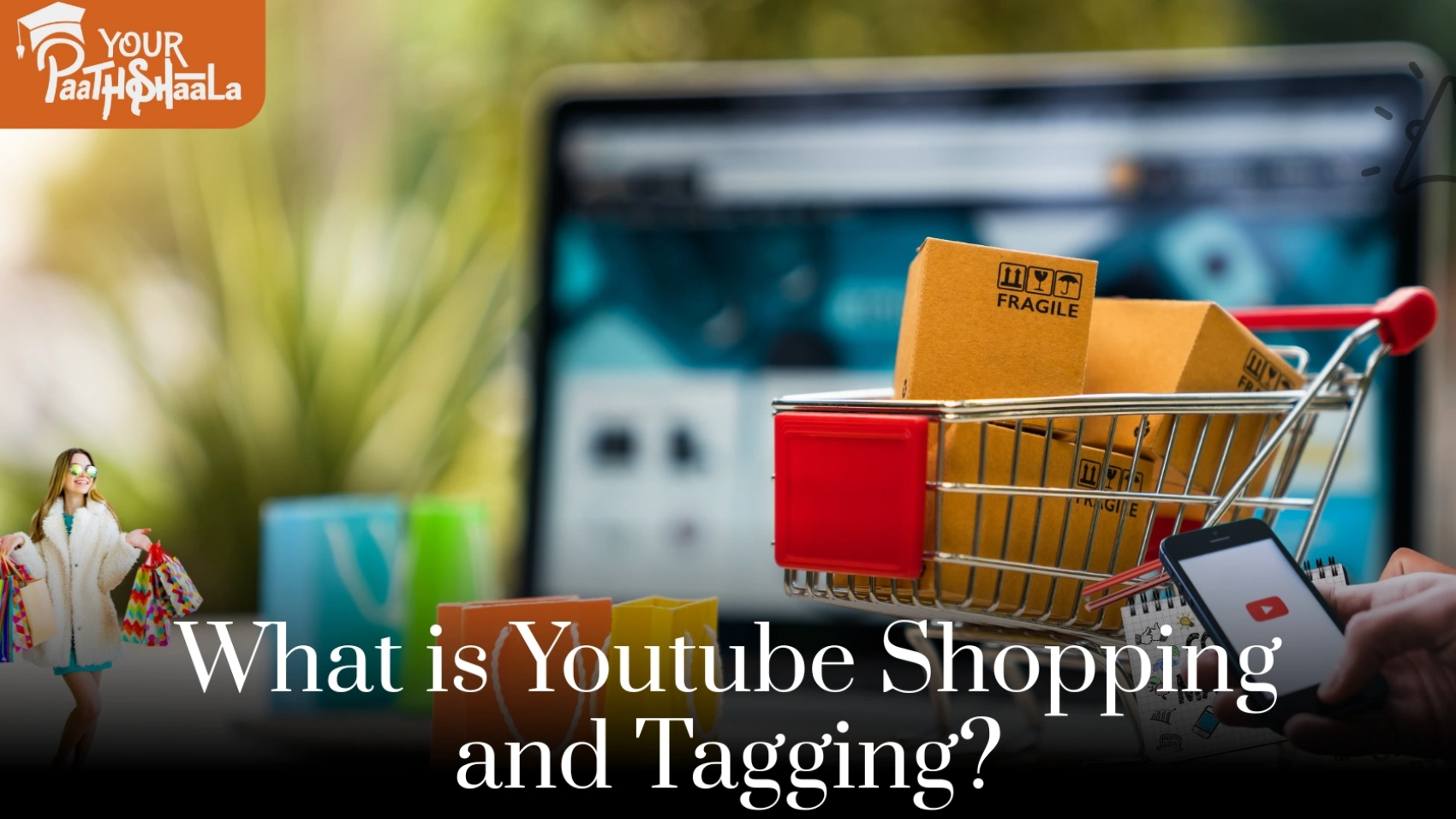Picture watching a makeup tutorial on YouTube, and with one click, you’re browsing the exact products used by the creator—without leaving the video. This is the magic of YouTube Shopping and product tagging, a game-changer for brands and creators in 2025. As social commerce surges, YouTube has transformed from a video platform into a bustling marketplace, where creators tag products in videos, Shorts, and live streams to drive seamless purchases. In 2023 alone, viewers watched over 30 billion hours of shopping-related content on YouTube, with a 25% increase in watch time for shoppable videos.
YouTube Shopping and product tagging empower creators and businesses to turn content into revenue, blending entertainment with e-commerce. Whether you’re a small business owner, a content creator, or a marketing pro, this blog dives into how to master YouTube Shopping, covering strategies, tools, real-world examples, challenges, and future trends. Get ready to unlock the potential of shoppable videos in 2025!
What is YouTube Shopping and Product Tagging?
YouTube Shopping is a feature that integrates e-commerce into video content, allowing creators to showcase and sell products directly through their channels. Product tagging lets creators link specific items in videos, Shorts, or live streams, enabling viewers to explore or buy products with a single click. A “Shopping” button or product sticker appears on-screen, directing users to a product list or retailer’s website. This creates a frictionless shopping experience, keeping viewers within the YouTube ecosystem.
Key components include:
- Shoppable Videos and Shorts: Creators tag up to 60 products in long-form videos or a single product sticker in Shorts, customizable for size and placement.
- Live Stream Product Pins: During live streams, creators pin products for real-time shopping, ideal for product launches or QVC-style events.
- Storefront Integration: Creators connect e-commerce platforms like Shopify or Teespring to display products on a channel’s Store tab.
- Affiliate Program: Eligible creators tag third-party brand products, earning commissions on sales in regions like the US, India, and Indonesia.
Example: Beauty creator Sydney Morgan tags her “Preppy Essentials” skincare products in a YouTube Short, driving 10,000 clicks to Sephora’s website in a day.
In 2025, YouTube Shopping is accessible to creators in the YouTube Partner Program (YPP) with at least 10,000 subscribers in supported regions like the US, India, and South Korea.
Why YouTube Shopping Matters in 2025
With e-commerce expected to hit $7 trillion globally by 2025, YouTube Shopping taps into the growing social commerce trend. Here’s why it’s a must for brands and creators:
- Boosted Conversions: Product tags simplify the buyer journey, increasing conversion rates by 20% compared to traditional video ads.
- Enhanced Engagement: Shoppable videos hold attention 3 times longer than non-shoppable ones, per YouTube Analytics.
- Revenue Opportunities: Creators earn commissions via the affiliate program, while brands see direct sales from tagged products.
- Data Insights: YouTube Studio’s Shopping tab tracks impressions, clicks, and sales, offering actionable data for optimization.
- Consumer Trust: 70% of viewers trust creator recommendations, making tagged products more appealing than banner ads.
Stat: In 2024, YouTube’s affiliate program expanded to more creators, with tagged products generating over 150 billion views across videos and Shorts.
Key Strategies for YouTube Shopping and Product Tagging
Mastering YouTube Shopping and product tagging requires strategic planning and creativity. Here’s how to make it work in 2025:
Optimize Product Tagging for Engagement
Effective tagging turns viewers into buyers. Follow YouTube’s guidelines to ensure tags are relevant and compliant:
- Highlight Relevant Products: Tag items prominently featured and meaningful to the content (e.g., a chef tags cookware in a recipe video).
- Use Timestamps: Add timestamps to long-form videos to show products at specific moments, improving user experience.
- Customize Stickers: For Shorts, adjust the size and placement of the product sticker to avoid cluttering the video.
- Disclose Paid Promotions: Include disclosures for affiliate or sponsored products to maintain trust and comply with YouTube policies.
Example: A fitness creator tags protein powder in a workout video, using timestamps to highlight it during a smoothie-making segment, driving a 15% click-through rate.
Tool: YouTube Studio’s Shopping tab simplifies tagging for videos, Shorts, and live streams.
Leverage Live Stream Shopping
Live streams are perfect for real-time engagement and impulse buys. Pin products during streams to highlight deals or new launches:
- Plan Ahead: Tag products 30 minutes before a live stream for optimal visibility.
- Use Pinned Products: Pin a single product to the screen during key moments, like a product demo, to drive focus.
- Engage Viewers: Use polls or Q&A to interact during streams, pairing them with tagged products to boost interest.
Case Study: A fashion brand hosts a live stream on YouTube, pinning a new jacket during a styling segment. The stream generates 5,000 sales in an hour, with real-time polls asking viewers’ favorite colors.
Tool: BocaLive’s AI-powered streaming software enhances live streams with scripts and multi-platform reach.
Curate Shopping Collections
YouTube’s Shopping Collections feature lets creators curate themed product lists, like “Spring Must-Haves” or “Tech Favorites,” displayed on their channel’s Store tab.
- Thematic Curation: Group products by use case or season (e.g., “Back-to-School Essentials”).
- Cross-Promote: Share collections in videos, Shorts, and social posts to drive traffic.
- Update Regularly: Refresh collections to align with trends or promotions.
Example: A nail artist curates a “Spring Nail Must-Haves” collection, tagging polishes and tools, boosting sales by 12% during a seasonal campaign.
Maximize Affiliate Opportunities
The YouTube Shopping Affiliate Program lets creators tag third-party products and earn commissions. Available in regions like the US, India, and Indonesia, it’s a low-risk way to monetize content.
- Choose Relevant Brands: Tag products from partners like Sephora or Samsung that align with your niche.
- Use the Affiliate Hub: Access commission rates, promo codes, and product samples via YouTube’s Affiliate Hub.
- Promote Strategically: Highlight deals or exclusive codes to entice viewers.
Stat: Creators in the affiliate program earn 5–20% commissions per sale, depending on the retailer.
Integrate with Interactive Content
Combine product tagging with interactive elements like quizzes or polls to boost engagement, aligning with your interest in interactive content marketing:
- In-Video Polls: Ask viewers to vote on products (e.g., “Which sneaker style do you love?”) and tag the options.
- Quiz Links: Embed quiz results in video descriptions that link to tagged products.
- Gamified Shorts: Create a Short with a mini-game (e.g., “Guess the Product”) and tag the answer.
Example: A tech creator runs a poll in a video asking, “Which gadget should I review next?” and tags the winning product, driving 8,000 clicks to the retailer’s site.
Technologies Powering YouTube Shopping
Several technologies make YouTube Shopping seamless in 2025:
- AI-Driven Tagging: Tools like CapCut Commerce Pro use AI to suggest products for tagging based on video content.
- E-Commerce Integrations: Platforms like Shopify, WooCommerce, and Teespring sync product catalogs with YouTube.
- Mobile Optimization: 5G ensures fast loading for shoppable Shorts and live streams.
- Analytics Dashboards: YouTube Studio tracks product performance, from impressions to sales.
- AR/VR Previews: Emerging AR filters let viewers “try on” tagged products virtually, enhancing purchase confidence.
Stat: 80% of YouTube Shopping traffic comes from mobile devices, emphasizing the need for mobile-friendly tags.
Challenges and Solutions
YouTube Shopping has hurdles, but solutions keep campaigns on track:
- Eligibility Barriers: Requirements like 10,000 subscribers or YPP status limit access. Solution: Grow your channel with engaging content and apply for YPP early.
- Compliance Issues: Non-compliant tags (e.g., irrelevant products) risk removal. Solution: Follow YouTube’s guidelines and review notifications in YouTube Studio.
- Viewer Training: Some users overlook tags, expecting links in descriptions. Solution: Highlight tags with on-screen callouts or tutorials.
- Regional Limitations: Tags are visible only in supported countries. Solution: Target audiences in regions like the US, India, or Indonesia.
Tip: Use YouTube Analytics to identify top-performing regions and tailor content accordingly.
Future Trends in YouTube Shopping
YouTube Shopping will evolve beyond 2025:
- Metaverse Integration: Shoppable virtual stores in platforms like Roblox will sync with YouTube tags.
- AI-Personalized Tags: AI will suggest products based on viewer preferences, increasing relevance.
- Voice-Activated Shopping: Voice assistants will let users buy tagged products hands-free.
- AR/VR Shopping: Virtual try-ons for tagged products will become standard, especially for fashion and beauty.
- Global Expansion: More regions will gain access to YouTube Shopping, with new retailer integrations.
Projection: By 2027, YouTube Shopping could drive $50 billion in global sales, per industry estimates.
Getting Started with YouTube Shopping
Ready to launch YouTube Shopping and product tagging? Follow these steps:
- Check Eligibility: Ensure your channel is in the YPP with 10,000+ subscribers and isn’t set as “Made for Kids.”
- Connect a Store: Link your Shopify, Teespring, or other supported platform via YouTube Studio’s Shopping tab.
- Tag Products: Upload a video or Short, go to the “Products” section in YouTube Studio, and add up to 60 tags.
- Promote Content: Share shoppable videos on social media, email, and X to drive traffic.
- Track Performance: Use YouTube Analytics to monitor clicks, impressions, and sales, optimizing based on data.
Example: A small jewelry brand tags earrings in a styling Short, using a poll to ask viewers’ favorite colors. The campaign drives 2,000 sales and collects 5,000 email leads.
Tool Tip: Try CapCut Commerce Pro for AI-assisted tagging or BocaLive for live stream enhancements.
Conclusion
In 2025, YouTube Shopping and product tagging are transforming e-commerce by blending video content with seamless purchasing. With 30 billion hours of shopping-related watch time and a 25% increase in shoppable video views, creators and brands can drive conversions, engagement, and revenue like never before. From live stream pins to affiliate commissions, YouTube Shopping offers endless possibilities. Challenges like eligibility and compliance exist, but tools like YouTube Studio and AI platforms make it accessible. The future, with AR try-ons and metaverse stores, promises even more innovation.
Ready to turn your YouTube channel into a virtual storefront? Start tagging products, experiment with live streams, and watch your sales soar. What’s your first YouTube Shopping idea for 2025? Share below and let’s spark some inspiration! In Bestdigitalmarketingcourseinraipur you will learn all about it and more.








